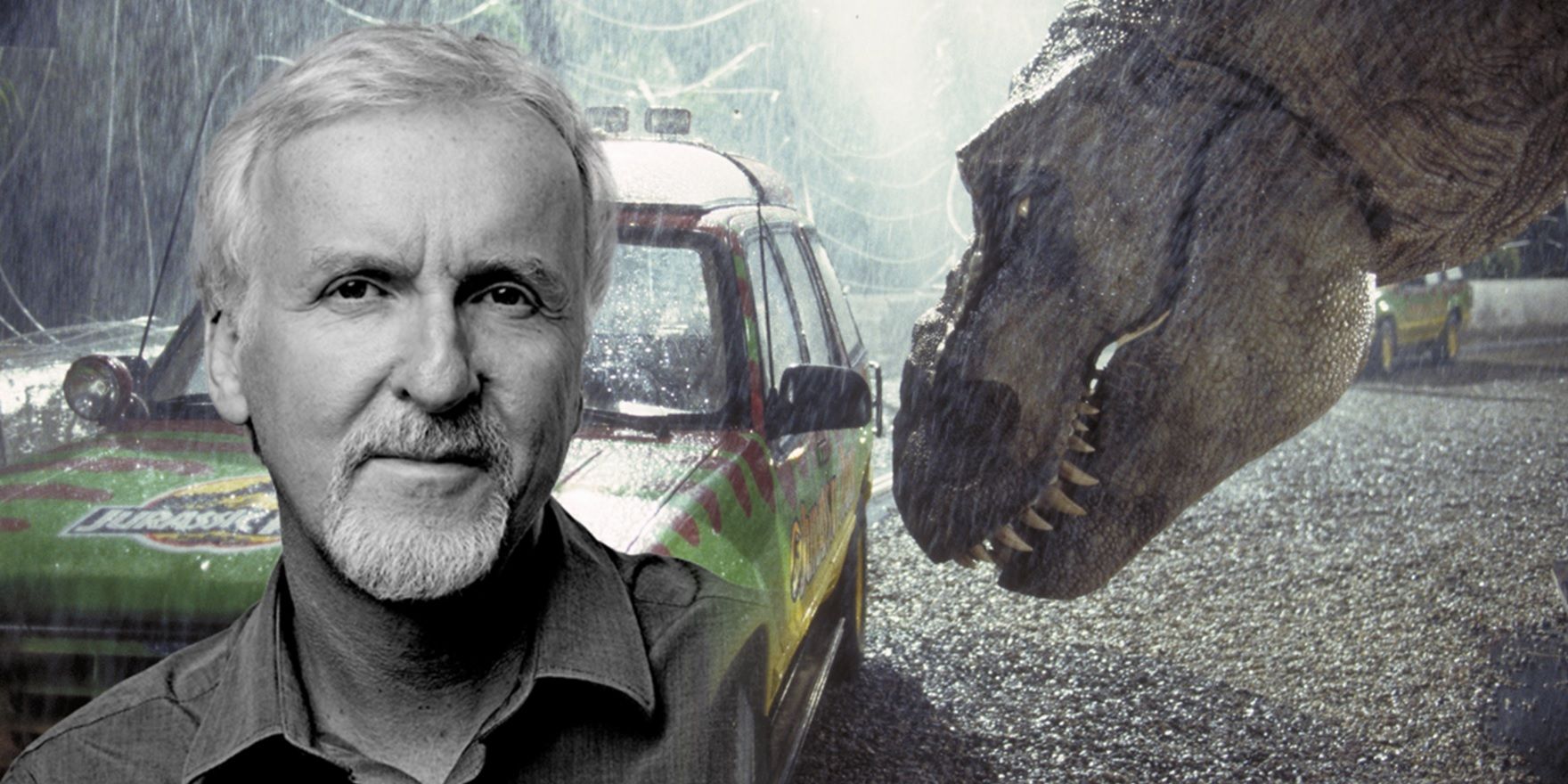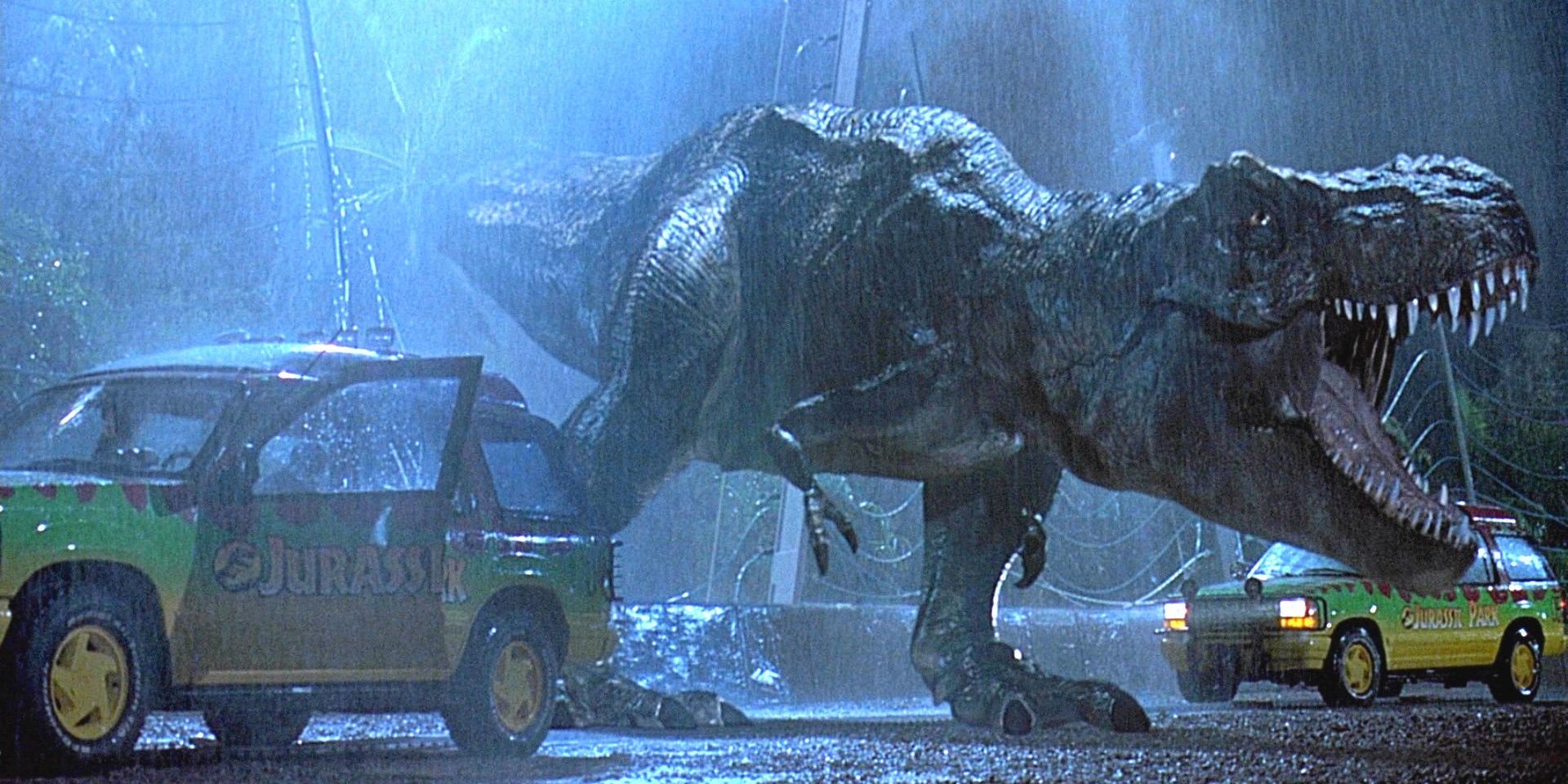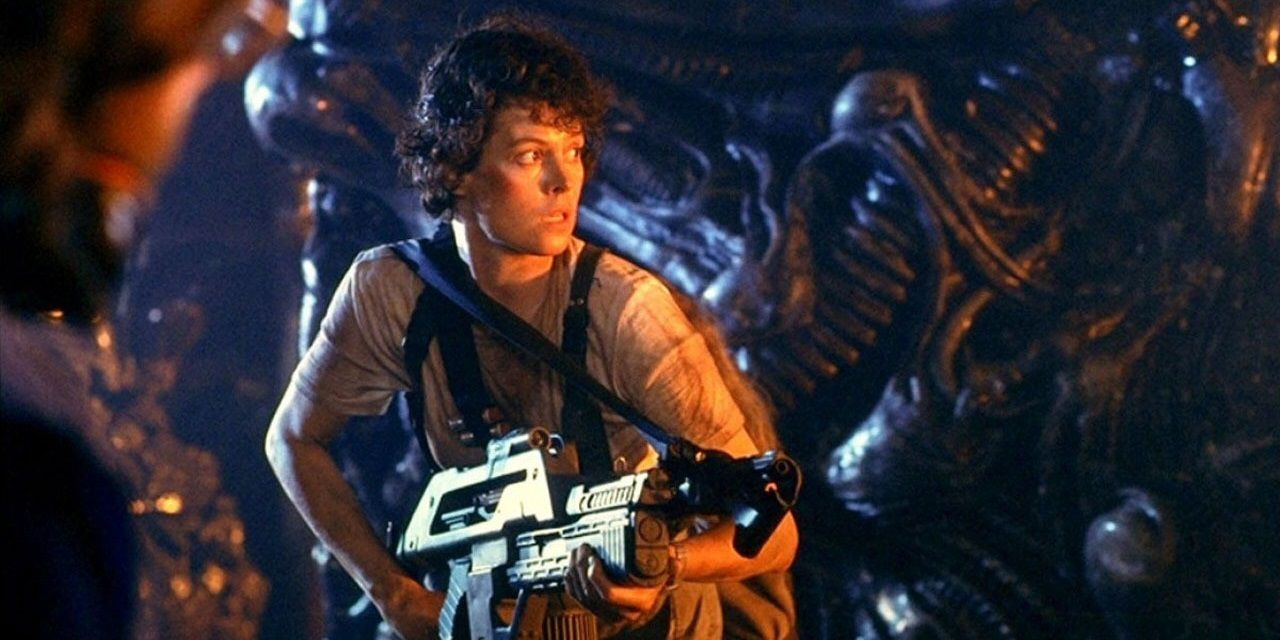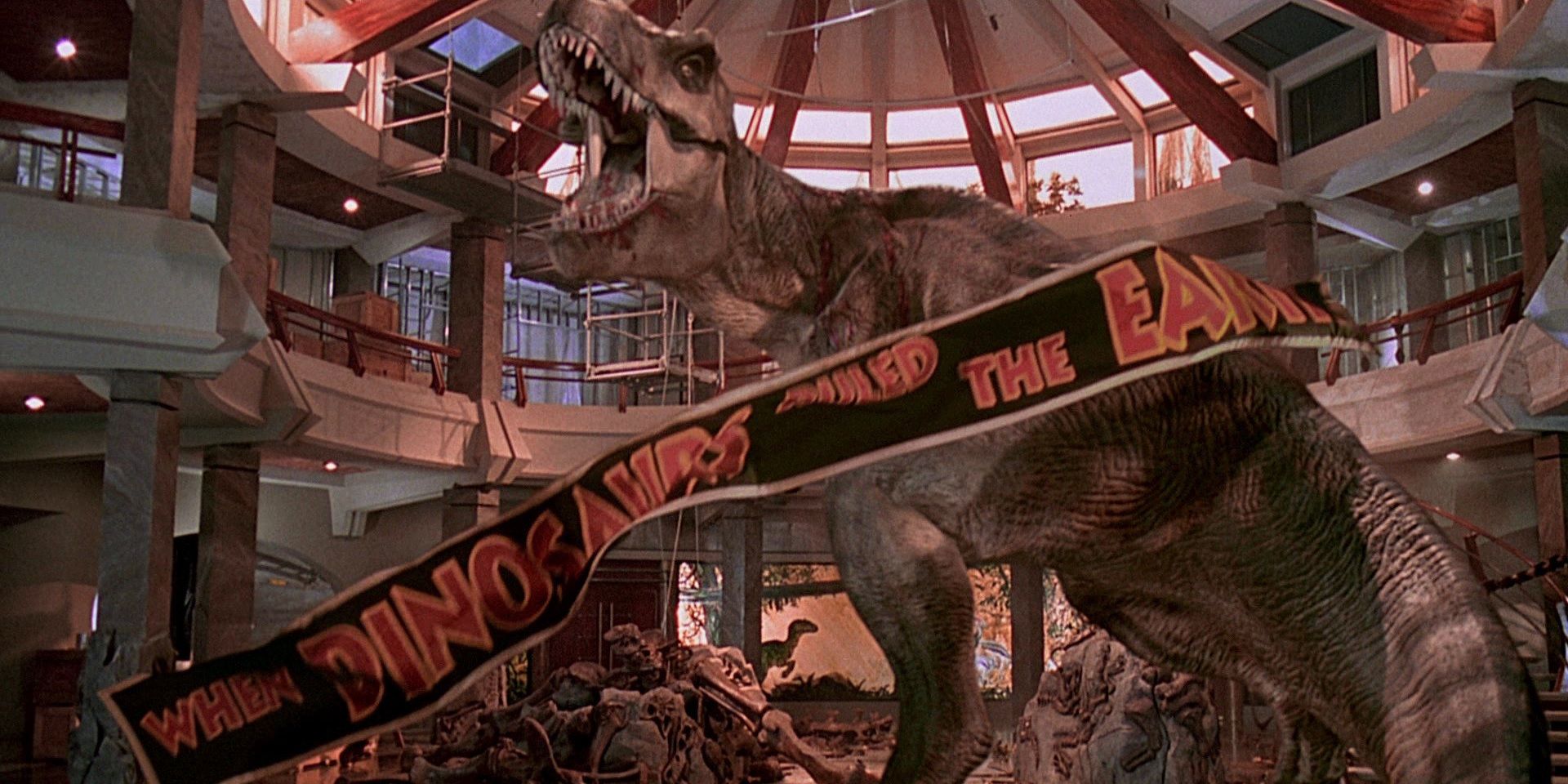
Steven Spielberg and James Cameron have the distinction of being the only two directors to have broken the record for highest-grossing movie ever made more than once. Cameron has broken the record twice, with Titanic and Avatar, while Spielberg has broken it a whopping three times with Jaws, E.T., and Jurassic Park. But the only reason that last movie was directed by Spielberg and not Cameron was a little twist of fate.
While at the opening of the Titanic Museum in Belfast back in 2012, Cameron revealed that he actually wanted to direct Jurassic Park himself. He read Michael Crichton’s source material, envisioned a film adaptation, called the publisher to ask about picking up the rights, and was met with some bad news. Cameron explained, “I tried to buy the book rights and [Spielberg] beat me to it by a few hours.”
RELATED: Jurassic Park Didn't Need Any Sequels
Whether Spielberg or Cameron directed the movie is about much more than whose name appears in the end credits. While they’ve both broken their fair share of ground in the world of visual effects, Spielberg and Cameron have very different filmmaking styles. Spielberg’s alien movie has a mild-mannered dad recreating Devil's Tower with mashed potatoes; Cameron’s alien movie has Marines being torn to shreds on a distant planet. Spielberg’s robot movie is essentially Pinocchio with artificial intelligence; Cameron’s robot movie has a police station massacre.

At the time, Cameron said, “When I saw the film, I realized that I was not the right person to make [Jurassic Park]. He was, because he made a dinosaur movie for kids, and mine would’ve been Aliens with dinosaurs, and that wouldn’t have been fair. Dinosaurs are for eight-year-olds.” When Spielberg read Jurassic Park, he envisioned a movie for the whole family, but when Cameron read it, he saw a dark, violent, bloody movie for grownups.
Spielberg sanitized a lot of the book’s violence. In the book, Nedry carries his own intestines after his initial attack. Muldoon cuts a raptor in half with a rocket launcher. John Hammond is eaten alive by a group of compys. If Spielberg didn’t tone down the violence and adapted the book faithfully, it couldn’t hope to avoid an R rating. Cameron’s plan was to lean into the graphic, brutal nature of Crichton’s source material: “I’d have gone further, nastier, much nastier.” One gruesome death scene that Spielberg was going to leave in was Samuel L. Jackson’s character, but bad weather prevented Jackson from flying out to the set. So, in the final movie, his death is merely implied by the presence of his severed arm.
It seems that the main difference between Spielberg’s Jurassic Park and Cameron’s Jurassic Park is that Spielberg aimed for a PG-13 rating and Cameron would’ve aimed for an R rating. “Aliens with dinosaurs” is the key descriptor. Cameron’s sequel to Ridley Scott’s 1979 horror masterpiece Alien is defined by its hard-R violence, nonstop grisly spectacle, and overwhelming sense of sheer terror. But it also has plenty of thought-provoking sci-fi storytelling that’s often overlooked. Carter Burke’s attempt to impregnate Ripley or Newt with a xenomorph so he can bring it home is similar to John Hammond playing God by cloning dinosaurs for an amusement park.

Cameron’s concession that Spielberg was the right filmmaker to helm Jurassic Park hinges on kids’ ability to enjoy it, but kids love Aliens (kids whose parents are cool enough to let them watch Aliens, anyway). As much as ‘90s kids loved Spielberg’s take on Jurassic Park, they probably would’ve lapped up a more blood-soaked version, too.
Spielberg was able to create mountains of tension without excessive on-screen violence in Jurassic Park. While Cameron’s version would’ve relied on boundary-pushing blood and guts to shock the audience, Spielberg terrified audiences across the world with a relatively bloodless PG-13 movie. The scene in which the raptors stalk Lex and Tim through the kitchen is a masterclass in suspense-building. The T. rex attack is both a thrilling midpoint twist and a perfectly crafted set piece. The threat of the raptors outlined by Alan Grant in an early scene is terrifying enough without actually seeing them claw out people’s guts.
It’s tough to say whether Cameron’s version would’ve turned out better than Spielberg’s because Cameron’s version didn’t get any further into development than calling to enquire about the rights, but Spielberg’s version is an untouchable masterpiece. With its revolutionary visual effects (which still hold up today), Jurassic Park is one of the greatest and most groundbreaking movies ever made.

After seeing Spielberg’s film, Cameron conceded that he was the wrong person to adapt Crichton’s novel. His Jurassic Park might’ve been a cool movie, though. In the age of re-imaginings, someone in Hollywood should cook up a blood-drenched, R-rated riff on Jurassic Park with more brutal, realistic dinosaur attacks in line with Cameron’s curious original vision for the Spielberg classic.

